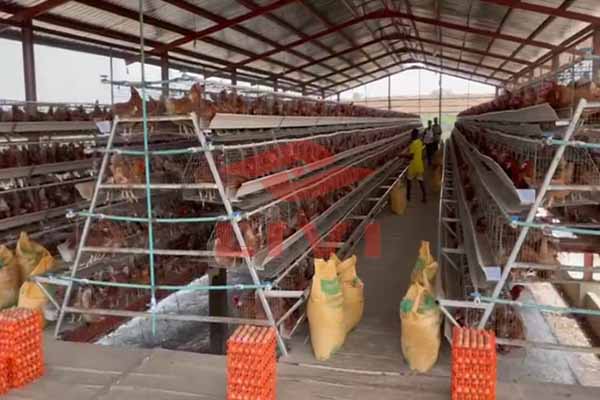
Efficient capacity configuration in egg-laying chicken farms is critical for maximizing productivity while ensuring animal welfare and operational efficiency. This article focuses on practical guidance for selecting and configuring A-type layer battery cages with varied layer counts—three, four, and five tiers—in the context of Zambia's poultry industry. By analyzing structural characteristics, capacity implications, and automation benefits, poultry farmers can refine their infrastructure layout to boost egg production and streamline management.
The layer count in battery cages directly impacts farm space utilization and bird performance. Here is an overview of the common configurations:
| Layer Count | Structural Characteristics | Ideal Application |
|---|---|---|
| 3 Layers | Lower height, robust frame; easier maintenance access | Small-medium farms prioritizing bird welfare and manual handling |
| 4 Layers | Balanced height-to-capacity ratio; moderate automation compatibility | Medium-large farms seeking space optimization without compromising access |
Selecting the appropriate layer count should consider farm height constraints, equipment availability, and labor skill sets.
Proper capacity allocation is crucial to balance bird comfort with production goals. According to industry data, the ideal stocking density for laying hens ranges from 450 to 550 cm² per bird inside the cage compartments. Overcrowding beyond this range can provoke stress, increase disease incidence by up to 30%, and reduce egg quality.
Conversely, too sparse a configuration underutilizes space and inflates operational cost per egg produced. Capacity decisions should also integrate airflow, lighting, and feeding system specifications to maintain a healthy rearing environment and minimize mortality rates, which typically average 5-10% annually in optimized farm settings.
For farms in Zambia with modest ceiling heights (<4 meters) and limited mechanization, 3 or 4-layer cages are preferable. These configurations facilitate manual feeding and cleaning, ensuring precise health monitoring without excessive strain on labor.
Larger commercial operations with higher vertical clearance and automation capability can benefit from 5-layer systems to maximize output per square meter. However, these farms must invest in appropriate equipment to handle feeding, waste removal, and egg collection effectively.
Key Site Factors to Consider:
Integrating automation solutions such as automatic feeding, manure cleaning, and egg collection systems significantly improve operational efficiency and reduce labor costs by approximately 25-40%, according to Livi Machinery’s client data.
For example, automated egg conveyors reduce breakage rates by 15%, translating to higher revenue retention. Automated manure removal also enhances biosecurity by minimizing pathogen buildup. These benefits justify upfront investments, especially for farms adopting higher layer configurations where manual management becomes impractical.

To optimize capacity configuration effectively, poultry farmers should:
Common Misconceptions:
.jpg)
As demonstrated by Livi Machinery’s successful deployments across Zambia, farms that embraced tailored cage layering and automation have recorded egg production increases up to 18% while reducing labor turnover by 30%. These case studies underscore the tangible benefits of strategic capacity planning.
Q: How to determine the optimal cage layer count if my facility has limited ceiling height?
A: Prioritize 3 or 4-layer cages for easier access and management; focus on quality over quantity to maintain bird welfare.
Q: Is automation cost-effective for small-scale farms?
A: Partial automation, such as automatic egg conveyors, can deliver efficiency gains even for smaller operations with a reasonable ROI timeframe.

